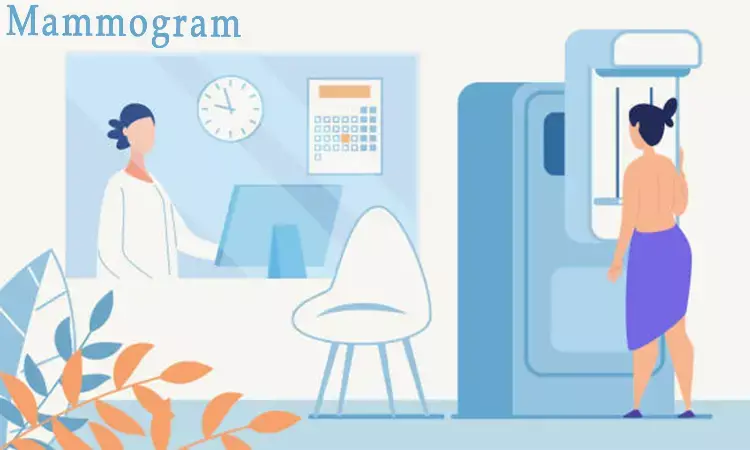- Home
- Medical news & Guidelines
- Anesthesiology
- Cardiology and CTVS
- Critical Care
- Dentistry
- Dermatology
- Diabetes and Endocrinology
- ENT
- Gastroenterology
- Medicine
- Nephrology
- Neurology
- Obstretics-Gynaecology
- Oncology
- Ophthalmology
- Orthopaedics
- Pediatrics-Neonatology
- Psychiatry
- Pulmonology
- Radiology
- Surgery
- Urology
- Laboratory Medicine
- Diet
- Nursing
- Paramedical
- Physiotherapy
- Health news
- Fact Check
- Bone Health Fact Check
- Brain Health Fact Check
- Cancer Related Fact Check
- Child Care Fact Check
- Dental and oral health fact check
- Diabetes and metabolic health fact check
- Diet and Nutrition Fact Check
- Eye and ENT Care Fact Check
- Fitness fact check
- Gut health fact check
- Heart health fact check
- Kidney health fact check
- Medical education fact check
- Men's health fact check
- Respiratory fact check
- Skin and hair care fact check
- Vaccine and Immunization fact check
- Women's health fact check
- AYUSH
- State News
- Andaman and Nicobar Islands
- Andhra Pradesh
- Arunachal Pradesh
- Assam
- Bihar
- Chandigarh
- Chattisgarh
- Dadra and Nagar Haveli
- Daman and Diu
- Delhi
- Goa
- Gujarat
- Haryana
- Himachal Pradesh
- Jammu & Kashmir
- Jharkhand
- Karnataka
- Kerala
- Ladakh
- Lakshadweep
- Madhya Pradesh
- Maharashtra
- Manipur
- Meghalaya
- Mizoram
- Nagaland
- Odisha
- Puducherry
- Punjab
- Rajasthan
- Sikkim
- Tamil Nadu
- Telangana
- Tripura
- Uttar Pradesh
- Uttrakhand
- West Bengal
- Medical Education
- Industry
Breast density and microcalcifications associated with increased risk of breast cancer

Breast density increases the incidence of microcalcification, an independent risk factor for breast cancer, says an article published in BMC Breast Cancer Research.
Microcalcifications and breast density are closely linked to the risk of breast cancer. Few research, however, have examined the combined relationship between the risk of breast cancer and these two variables. Soyeoun Kim and colleagues examined the relationship between breast density, microcalcifications, and breast cancer risk in this study.
3,910,815 women between the ages of 40 and 74 who had breast cancer screening between 2009 and 2010 and were monitored until 2020 were included in this cohort research. Results from the national breast cancer screening program, which is a structured screening program administered every two years for all women aged 40 or older, are included in the National Health Insurance Service database. Radiologists mostly used visual evaluation to determine breast density using the Breast Imaging Reporting and Data System (BI-RADS) 4th edition. The mammographic data were used to determine if microcalcifications were present or absent.
The key findings of this study were:
1.58,315 women in all acquired breast cancer during the course of a median follow-up of 10.8 years.
2.Compared to women without breast cancer, those with breast cancer exhibited a greater percentage of microcalcifications.
3.Those with microcalcification had a 3.07-fold higher risk of breast cancer than women without microcalcification after controlling for breast density.
4.A greater degree of breast density was associated with a significantly higher risk of breast cancer due to the interaction between microcalcification and breast density.
5.Women with BI-RADS 4 and microcalcification were the postmenopausal women most at risk for developing these conditions.
6.Compared to women with BI-RADS 1 and non-microcalcification, these women had a risk that was more than seven times greater.
This countrywide population-based research from South Korea with over 4 million participants found a correlation between microcalcification (a deposit of calcium oxalate or calcium phosphate with a diameter of <1 mm as identified on a mammogram) and a 3-fold increase in the risk of breast cancer. The risk of breast cancer was dramatically elevated by up to 7 times when microcalcification and thick breasts (also seen on mammograms) were combined.
Reference:
Kim, S., Tran, T. X. M., Song, H., & Park, B. (2022). Microcalcifications, mammographic breast density, and risk of breast cancer: a cohort study. In Breast Cancer Research (Vol. 24, Issue 1). Springer Science and Business Media LLC. https://doi.org/10.1186/s13058-022-01594-0
Neuroscience Masters graduate
Jacinthlyn Sylvia, a Neuroscience Master's graduate from Chennai has worked extensively in deciphering the neurobiology of cognition and motor control in aging. She also has spread-out exposure to Neurosurgery from her Bachelor’s. She is currently involved in active Neuro-Oncology research. She is an upcoming neuroscientist with a fiery passion for writing. Her news cover at Medical Dialogues feature recent discoveries and updates from the healthcare and biomedical research fields. She can be reached at editorial@medicaldialogues.in
Dr Kamal Kant Kohli-MBBS, DTCD- a chest specialist with more than 30 years of practice and a flair for writing clinical articles, Dr Kamal Kant Kohli joined Medical Dialogues as a Chief Editor of Medical News. Besides writing articles, as an editor, he proofreads and verifies all the medical content published on Medical Dialogues including those coming from journals, studies,medical conferences,guidelines etc. Email: drkohli@medicaldialogues.in. Contact no. 011-43720751


